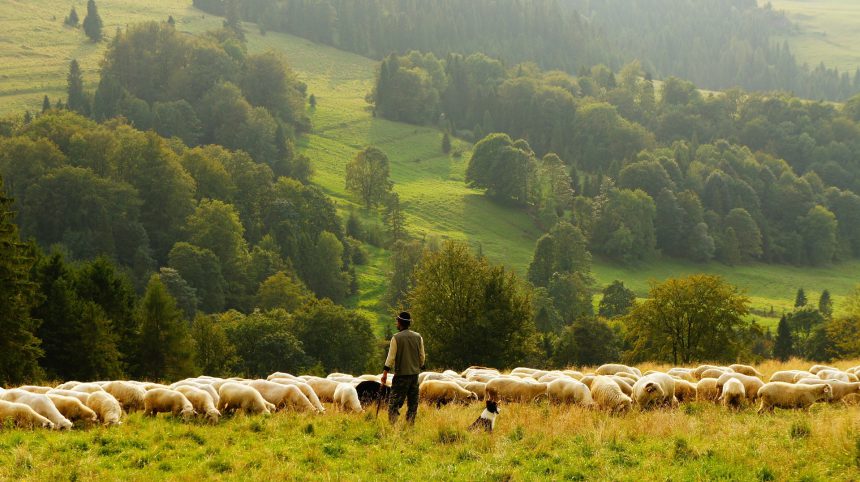By: Younus Sandeela
Published in Daily Dawn
PRICES of all types of meat have constantly been rising in the local retail market owing to a widening supply and demand gap defying the official numbers in the absence of a regular livestock census.
There are sufficient reasons to question the accuracy of the official statistics because if it is anything to go by then the meat prices should be stable if not on the decline.
Lack of organised meat farming is the main reason behind shortage of meat supply. Barring poultry, which has developed into a vibrant industry, supply of mutton and beef depends entirely on informal sources.
Lack of organised meat farming is the main reason behind the shortage of meat supply. Barring poultry, which has developed into a vibrant industry, the supply of mutton and beef depends entirely on informal sources
Many farmers rear few cattle a as side business forming the fundamental source of meat supply, particularly for mutton. Though, they rear cows and buffaloes as well, there is an easier source of beef supply too, the dairy industry.
In the absence of any organised arrangement whereby, cows and buffaloes that are off lactation could be purchased from dairy farmers and resold to them when they were back on lactation after going through the reproduction cycle, dairy farmers are forced to sell such non-lactating dairy cattle to butchers.
Butchers’ business model is simple and highly lucrative. They buy dry female cows and buffaloes from dairy farmers and resell these animals, some of whom are fairly young having served as few as two or three lactations and are of good pedigree, within 24 hours as meat at the slaughter houses.
As compared to this anyone who buys these drying dairy cows and buffaloes with the plan to resell them back into the dairy industry as productive dairy cattle after taking them through the reproduction cycle has to wait for nothing less than 10 months. This business model also bears the risk of infertility or delayed pregnancy amongst the purchased cattle.
Putting a complete ban on slaughtering of productive dairy females is the only way we can save our valuable genetic pool of dairy cattle and save the dairy industry from complete collapse. However, for such a ban to work without drying up the already weak supply of beef it is critical that organised meat farming is concurrently promoted at large scale.
Indiscriminate slaughtering of young calves has also played havoc with country’s livestock sector.
Worried by the milk consumed by young calves, most dairy farmers sell these calves to butchers soon after they are born. The trend of retaining female calves has somewhat picked up lately but most dairy farmers find it economically unviable to retain these calves till the time they become productive dairy cows or buffaloes.
Unchecked smuggling of cattle, particularly through the western border is another major cause of fast depletion of country’s livestock. This is a double-edged sword as it not only deprives the government of the duties it could have raised if the cattle was exported through official channel but it also drains the livestock resource of the country at an alarming pace.
Dry buffaloes freshly coming out of dairy farms are particularly in high demand in markets served by these smugglers. This, along with reckless slaughtering of young calves and productive females, has caused price of good breed cows and buffaloes to rise five to six times in last 15 odd years.
Slaughtering of very young goats for ‘sadaqa’ or on religious occasions like ‘aqqiqa’ is also causing a huge damage to meat supply chain. All types of slaughtering of goats before the animal has attained certain age and body size should be banned.
Export of meat from Pakistan has also picked up considerably in last decade or so. Whereas, this has brought in the much-needed foreign exchange, the earnings have not been without a sacrifice. Middle East, the main market for Pakistani meat, demands only prime meat. Goat carcass weighing between 8 to 12 kg is what is acceptable in these markets.
This again means slaughtering of goats at young age which restricts meat yield per cattle head. Slaughtering young animals also limits each animal’s ability to produce offspring, thus seriously restricting population growth in the long run.
In order to put a check on early slaughtering of cattle and to encourage organised supply of livestock, backgrounding must be introduced as a business proposition amongst investors.
Backgrounding is the stage in cattle rearing whereby weaned calves, mostly males, are reared till they can be sold to the feedlot fattening farms. Similar model for female calves of dairy breed must also be developed.
Additionally, breeding farms particularly for goats and sheep must be encouraged to improve the organised supply of cattle. Goat and sheep breeding is an extremely profitable business and therefore must be formally promoted amongst investors.
Efforts must also be made to encourage production and consumption of other types of meat like camel and ostrich so that pressure could be eased from existing sources of meat mainly goats and cows.
Unless and until efforts are made by the government on a war-footing to organise the meat sector we will keep consuming our dairy cattle as meat and in the end will neither have enough meat nor milk in the country and would be forced to import these commodities in order to fulfil domestic demand.
The writer is a banker-turned-agribusiness specialist
ysandeela@yahoo.com
Published in Dawn, The Business and Finance Weekly, June 10th, 2019


Leave a Reply